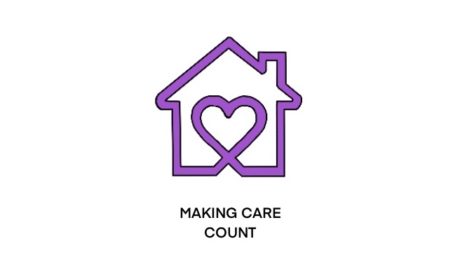Climate Change and COVID-19: Why Gender Matters
This article was originally published in the Georgetown Journal of International Affairs on July 9, 2021.
The COVID-19 pandemic highlights the important intersections of climate change, food security, migration, and socio-economic inequalities. An understanding of the gendered dimensions of these interconnected global concerns is crucial for developing a post-COVID recovery plan that ensures a more equal world and bolsters its resilience.
In many ways, the year 2020 spotlighted the compounding issues societies must reckon with, including climate change, COVID-19, and sustained inequality. Today, we are witnessing the drastic consequences of climate destabilization resulting largely from human actions: frequent heat waves, intense flooding and droughts, water crises, increased biodiversity loss, reduced agricultural productivity, and faster disease transmissions. Many of these underlying causes of climate change also increase the risk of future pandemics. For example, deforestation leading to loss of animal habitat forces animals to migrate and brings them into closer contact with other animals or people, increasing the likelihood of zoonotic transmission.
The effects of climate change are being felt throughout the world; its worst impacts are particularly damaging in poorer regions, such as those in sub-Saharan Africa, Latin America, the Caribbean, and Asia. Severe and prolonged droughts have already affected the Sahel and most of East Africa. Meanwhile, severe storms and flooding are causing extensive damage across the world, and climate change-related food insecurity has resulted in thousands of deaths. Climate change has also intensified water scarcity, reaching critical levels in seventeen countries. Major rivers no longer reach the ocean, while reservoirs and lakes dry up and underground water aquifers are depleted. As climate change continues, drier areas will only be more prone to drought and humid areas more prone to flooding. As food, water, and other resources become increasingly strained, fierce competition over scarce natural resources is likely to escalate. In fact, natural disasters and climate-related conflicts have already dislocated millions of people. In 2017 alone, the UNHCR estimates about 30.6 million new displacements associated with conflicts across 143 countries and territories.
Making Gender Visible in Climate Change Issues
It is fundamental to note that these aforementioned issues are gendered. Gender disparities in access to resources such as land, credit, and extension training have put many women at greater risk with regards to maintaining their livelihoods and accessing food and water. Climate change not only reflects pre-existing gender inequalities, but it also reinforces them. The pivotal role of women in food security is well-documented. Recent estimates for Africa indicate that women provide 40 percent of labor in crop agriculture while at the same time providing labor in small livestock, poultry, and other food production-related activities. Many are income earners, serving as breadwinners in female-headed households while performing most of the household and family care work. However, gender inequalities in the ownership and control of household assets, gender discrimination in labor markets, and rising work burdens due to male out-migration undermine women’s income generating capabilities. Much of women’s work in food production and food access remain statistically invisible because conventional economic indicators fail to capture the significance of their contributions—contributions that are also overlooked in policymaking.
The gendered consequences of climate change include effects on migration flows. Migration has diversifies livelihoods and serves as an important coping mechanism through the promise of remittances or a better life. Internal and international migrations involve individuals and families seeking protection as refugees from the violence in their communities and states and those whose livelihoods are threatened by natural or man-made factors such as natural disasters, economic crises, or political instability. More recently, the increased frequency of extreme weather events and high temperatures have led to climate-induced migration flows exemplified by the influx of climate refugees seeking entrance into the United States in response to hurricanes, and rural-urban migration in Vietnam in response to typhoons.
The ability of households and their members to relocate varies depending on their resources and their vulnerability to the risk of falling further into poverty. Both the gendered dimension of migration and the climate shock impact on migration decisions are nuanced. Migration can challenge certain social expectations and cultural norms. Household care responsibilities and gender roles may restrain women from migrating. In the case of increased conflicts over natural resources, for instance, women are less able to flee than men as they are often responsible for taking care of the children. In Indonesia, climate shocks have promoted more migration among men. Similarly, male migration in Ethiopia and Nigeria has increased with drought and weather variability, while women are forced to stay put due to financial constraints. On the other hand, increasing demands for care workers in countries with high female labor force participation and aging populations provides employment opportunities for women, fueling international migration flows. In 2019 alone 48 percent of the 272 million (3.5 percent of the world’s population) international immigrants were female.
Gender and the COVID-19 Pandemic
The trends in climate-induced problems have foreshadowed the severity of the crises induced by the COVID-19 pandemic. The pandemic has affected all aspects of everyday life and work and has placed a heavy toll on families, communities, and economies. It threatens food security for tens of millions of people. The COVID-19 crisis, like the climate crisis, is causing disparate impacts across nations and social groups. It poses a much greater risk to elderly persons and those with underlying risk factors. Countries with fewer economic resources and weak social and health infrastructure are at a higher risk, not only in the short term but also in the longer term. Politically underrepresented groups suffer the most from lockdowns, rising unemployment, and unexpected medical costs, exacerbating existing economic inequalities.
More importantly, the COVID-19 crisis also unravels and further amplifies gender inequalities. As millions of people lose their jobs or become forced to work from home, many, especially mothers, are compelled to simultaneously juggle work and childcare responsibilities. Unpaid care work has increased not only with children out of school but also with the heightened care needs of the elderly and the sick, especially when health services are either inaccessible or overwhelmed. Ultimately, many women are earning less, saving less, working precarious or insecure jobs, or living close to poverty.
Gender-based violence is rapidly increasing as well. Many women are being forced to “lock down” at home with their abusers at a time when support services for survivors are being disrupted or made inaccessible. In Peru, the imposition of lockdowns has led to a 48 percent increase in phone calls to the helpline for domestic violence.
The COVID-19 pandemic also exposes the precarious employment conditions of many “essential workers” whose jobs increase their risks of infection and are often employed on temporary contracts. Migrants are among the key workers who deliver essential services; they play a critical role in essential sectors in many high-income countries working as crop pickers, food processors, care assistants, and cleaners in hospitals. These migrant workers help facilitate systemic resilience to threats, but their own vulnerabilities go unaddressed.
Conclusions
We cannot afford to ignore the particular vulnerability of women when analyzing the effects of climate change on food security and migration, and we cannot ignore their susceptibility to food insecurity and violence. As governments and policymakers grapple with the challenge of bolstering resilience, they will need to think beyond the effects of these shocks on markets and to pay more attention to the heightened social and economic inequalities. Such an objective requires a comprehensive, gendered approach that considers women’s roles in the provision of essential goods and services and the differentiated impacts of climate change.
Fiscal stimulus packages and emergency measures have been put in place by many countries to mitigate the impacts of COVID-19, but it is crucial that these responses as well as post-COVID recovery plans put women and girls’ interests and needs, rights, and protection at their center. Such responses and plans should include expanded public investment in the care delivery system, from childcare to healthcare to eldercare, which the COVID-19 crisis has disrupted. There is also a need for gender-sensitive analyses of the effects of economic, social, and migration policies along with the development of legal frameworks that effectively address domestic violence. Meaningful participation of women in policy discourse and dialogue addressing climate change is vital as they are disproportionately vulnerable.
Governments should also undertake and support the collection of sex-disaggregated data on various economic, social, and climate-change related indicators as the lack of data is sometimes used as an excuse not to implement gender-responsive policies. As UN Women has stated, “it is not just about rectifying long-standing inequalities but also about building a more just and resilient world.”
This article was written by the CWE-GAM Project’s Principal Investigator Maria S. Floro and was originally published in the Georgetown Journal for International Affairs on July 9, 2021.
- Published in COVID 19, Economic Recovery, Feminist Economics, Gender Inequalities, Gender-Equal Economy, Maria Floro, Policy
“Girly Issues” Are Now the Country’s Issues
Dr. Nancy Folbre, an Advisor and Researcher of the CWE-GAM project and a groundbreaking feminist economist was among the first to sound the alarm about the care crisis. Dr. Folbre’s work on the care sector, once considered “just girly issues” by fellow economists, are now recognized as issues belonging to the U.S.. Previously the recipient of the 1998 MacArthur “genius” grant, Dr. Folbre’s research has journeyed from “fringe idea to more mainstream policy.”
Once cast aside in policy discussions, the care crisis is finally getting the spotlight it deserves after the pandemic forced many schools and child-care centers to close, leaving “ten million mothers of school-age children out of the workforce.” The pandemic is forcing policymakers to finally face the cracks in America’s care infrastructure that Dr. Folbre and other experts have long pointed out— “a system where working parents do not have reliable, affordable child care is one where they cannot reliably build a career.”
To learn more about Dr. Folbre’s work on care, visit her blog Care Talk and read her recent book The Rise and Decline of Patriarchal Systems.
This blog was authored by Lucie Prewitt, a research assistant for the CWE-GAM project.
- Published in Child Care, COVID 19, Economic Recovery, Feminist Economics
Making Care Count
The COVID-19 pandemic has informed our understanding of the care economy, exposing disproportionate inequities that must be addressed to alleviate the international erasure of care workers. These issues are addressed in the latest Susan and Michael J. Angelides Lecture, in which Naomi Klein moderates a discussion between Congresswoman Pramila Jayapal and CWE-GAM researcher Dr. İpek İlkkaracan on COVID-19 and the care economy.
We live in an economic system that has traditionally deprioritized and invisibilized care workers, many of which are women of color, migrant, and poor women. The economic crisis brought on by the pandemic has consequently given policymakers and academics “a once-in-a-generation opportunity to address [the valuation of care work] from an intersectional [approach],” states Congresswoman Jayapal.
The Care Crisis Exposed by the Pandemic Recession:
When mass unemployment hit during the pandemic, the cracks in the economic infrastructure of America began to show. As millions of people lost their jobs, the highest increase in the number of uninsured Americans was subsequently recorded. This high number of uninsured people is a direct consequence of healthcare being employer-sponsored. Congresswoman Jayapal notes that “Medicare For All would have strengthened the response to the pandemic…30 percent of COVID-19 deaths were related to a lack of insurance.”
While gains were made in the past decade in regards to gender equality in the workplace, Congresswoman Jayapal notes that “as soon as the pandemic hit, it was the women who went back to taking care of [their] families.” Dr. İpek İlkkaracan explains that this is because “the nature of women’s employment is often determined by their care responsibilities…unpaid care work is often articulated as one of the most significant barriers to labor force participation.” This notion was reflected in jobs reports—in December of 2020, women accounted for 100 percent of job loss, and within that, 154,000 Black women exited the workforce.
In its current state, the care economy produces a pattern of inequality that disproportionately affects women of color and migrant women. The average caregiver salary is $12.74, and the care work sector is marked by poor working conditions with no adequate social protections and low wages. This is why, as Congresswoman Jayapal notes, the fight for one fair wage is pertinent. “An increase in the minimum wage would give 32 million workers a raise, 60 percent of which are women while 1 in 4 of the women who would benefit from this increase are Black or Latina.”
A Framework for a More Caring Economy:
Dr. İpek İlkkaracan has developed a framework that acknowledges the care economy. This framework, coined as the Purple Economy (a nod to the color representative of many women’s movements), envisions a gender-egalitarian and caring economic system. Dr. İlkkaracan recommends “labor market regulations and investment in care services such as long-term care, early childhood education, education, and healthcare” as policy interventions to start the process of adequately valuing care.
Not only is investment in care important from a humanitarian and ethical perspective, but it is also conducive to economic stability. Dr. İlkkaracan’s research has revealed that investment in care services produces a high employment multiplier: for every dollar invested in care, three times as many jobs are created in the wider economy. This is because the care sector is intertwined with other sectors such as food, transport, and financial services. In the Asia-Pacific region, Dr. İlkkaracan’s research has shown that “up to four trillion dollars could be added to GDP if unpaid care work (75% of which done by women) was valued in market terms.” While this may seem astronomical, the amount of unpaid work completed globally in one day equates to 16.4 billion hours—which translates to two billion full-time jobs. Dr. İlkkaracan’s recent research also reveals that a “3.5-4% commitment of GDP to investment in care services would create 120 million additional jobs and have a large impact on poverty alleviation.”
To watch the full conversation and learn more about the Purple Economy, see below.
Dr. İpek İlkkaracan is a CWE-GAM researcher a part of the Rethinking Macroeconomics and Gender Aware Applied Economics Working Groups.
This blog was authored by Lucie Prewitt, a research assistant for the CWE-GAM project.
- Published in Child Care, COVID 19, Economic Recovery, Gender-Equal Economy, Policy, Rethinking Macroeconomics, U.S.
Biden’s American Jobs Plan Could Be Monumental for the Care Economy in the U.S.
Last month, the Biden administration revealed the details of the $2 trillion American Jobs Plan.
The plan recognizes that investing in the care economy, as with investments in traditional infrastructure, can lift incomes, unleash productivity, and pave the path towards a more equitable economic recovery and growth.
Addressing the care crisis
Built into the plan is a pledge to “solidify the infrastructure of our care economy by creating jobs and raising wages and benefits for essential home care workers.” The plan calls for Congress to invest $400 billion towards expanding access to quality, affordable home- or community-based care for aging relatives and people with disabilities. These investments will help Americans to obtain the long-term services and support they need, while creating new jobs and offering care workers a long-overdue raise, stronger benefits, and an opportunity to organize or join a union and collectively bargain. Research has shown that increasing the pay of care workers leads to better quality care overall. Through creating well-paying care jobs with benefits and o collectively bargaining rights, as well as building state infrastructure, the plan aims to improve both the quality of job for care workers and the quality of service for care recipients.
Lack of access to childcare makes it harder for parents, especially mothers, to fully participate in the workforce, hurting families and hindering U.S. growth and competitiveness. In areas with the greatest shortage of child care slots, women’s labor force participation is about three percentage points less than in areas with a high capacity of child care slots. The pandemic has severely exacerbated this problem with more than 1 in 4 facilities still remaining closed as of December 2020. President Biden is calling on Congress to provide $25 billion to help upgrade child care facilities and increase the supply of child care in areas that need it most. These funds are to be provided through a Child Care Growth and Innovation Fund for states to build a supply of infant and toddler care in high-need areas. Also included in this $25 billion is a call for expanded tax credits to incentivize businesses to provide care facilities at their establishments. This will grant accessible, high quality care and learning environments for children of employees. This particular part of the plan is structured so that employers will receive 50 percent of the first $1 million of construction costs per facility.
Investment in care is investment in infrastructure
As Cecelia Rouse, Chair of the Economic Advisors for the Biden administration, recently indicated during a recent press conference, we need to “upgrade our definition of infrastructure” to include the care economy. Rouse defended the Biden administration’s plan to spend $400 billion of the infrastructure plan’s budget on the care economy, defining it as a legitimate infrastructure investment and a key component to addressing economic inequities in the U.S. The care economy is critical to U.S. economic activity, and its absence would greatly hinder economic productivity. The inclusion of care work and the care economy in the American Jobs Plan is a critical first step in mending a critically broken care infrastructure in the U.S.
Still, it is only the first step. The U.S. is the only industrialized nation that fails to provide national paid family leave and medical leave programs, and where hundreds of thousand sit on waiting lists for desperately needed home care. LeadingAge, which represents service providers in the sector, estimates that half of all Americans will need long-term services and support after turning 65, and that by 2040, a quarter of the U.S. population will be 65 or older. In addition to the President’s proposal for the care economy, we also need investments to finally put America on a path to universal childcare and early learning, national paid family and medical leave and paid sick days for all workers. The COVID-19 pandemic has exposed both the importance of care work and the vulnerabilities of our care infrastructure. At the same time, it has also created an opportunity for us to rethink the value of care and care work, opening ways for us to rebuild a more resilient care infrastructure and a more inclusive economy.
This blog was authored by Jenn Brown, CWE-GAM Communications Assistant
- Published in Child Care, Economic Recovery, Policy, U.S.
Engendering the Macroeconomy: Current Efforts and Future Directions
On International Women’s Day earlier this month, the Whitaker Institute hosted a webinar titled “Engendering the Macroeconomy: Current Efforts and Future Directions” featuring Dr. Maria S. Floro, Principal Investigator of the Care Work and the Economy Project (CWE) and CWE contributing researcher Dr. Srinivasan Raghavendra. Dr. Raghavendra also serves as Co-PI of DFID funded research on “Economic and Social Costs of Violence Against Women and Girls.” This session was hosted by Dr Nata Duvvury, co-leader of the Gender and Public Policy cluster at the Whitaker Institute.
The webinar focused on exploring what engendering the macroeconomy entails, current efforts, and future directions. The discussion provides insight into ways to bring gender dimensions into macroeconomics by incorporating unpaid and paid care of children, the sick, disabled and the elderly into existing macroeconomic models, the interdependency between the market economy and the care economy, and how gender blindness of macroeconomic models are reflected through every crisis.
This blog was authored by Jenn Brown, CWE-GAM Communications Assistant.
- Published in Economic Recovery, Expert Dialogues & Forums, Gender-Equal Economy, Macroeconomics





